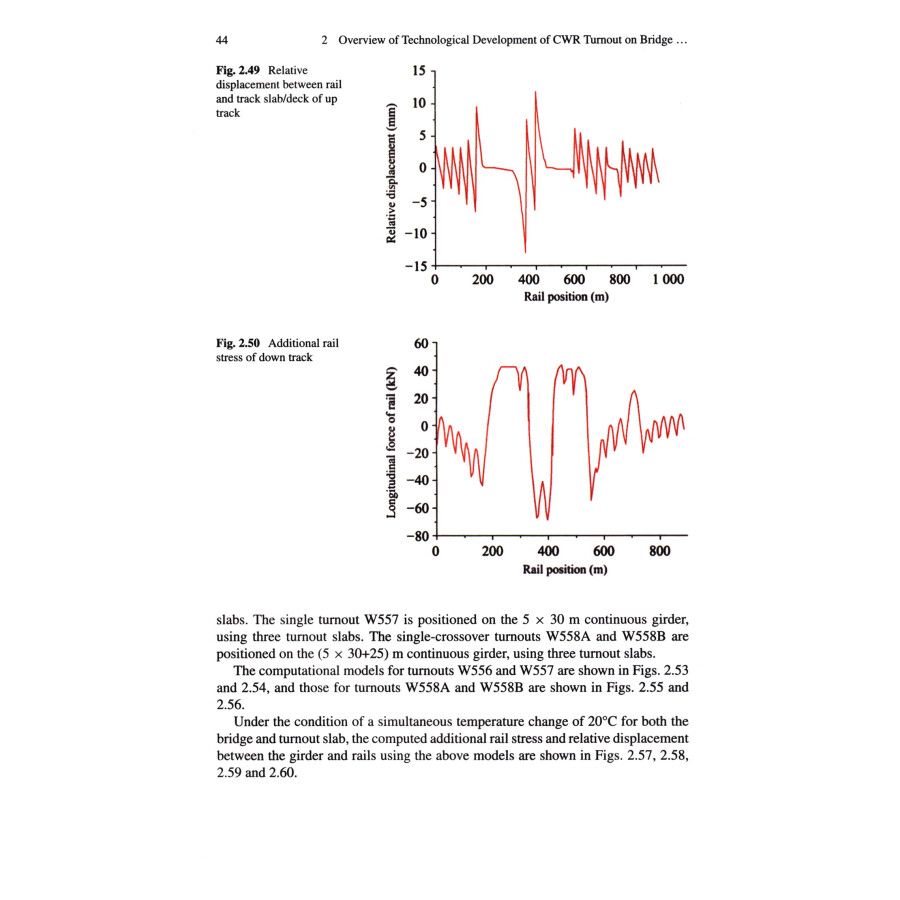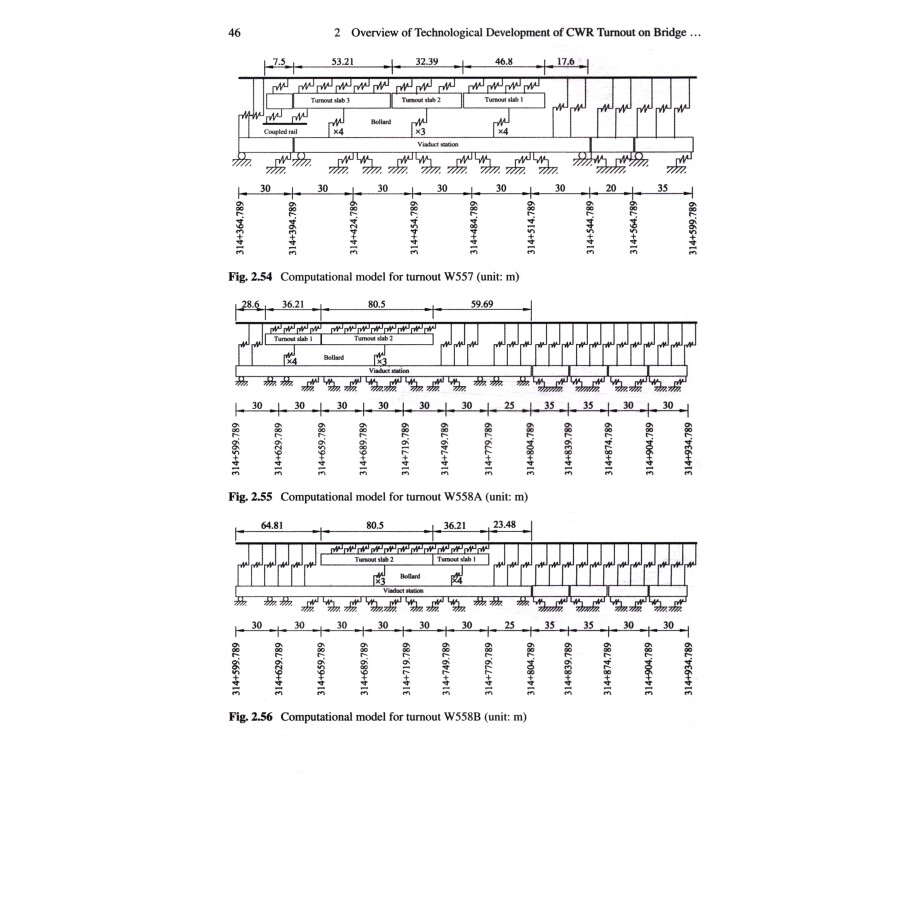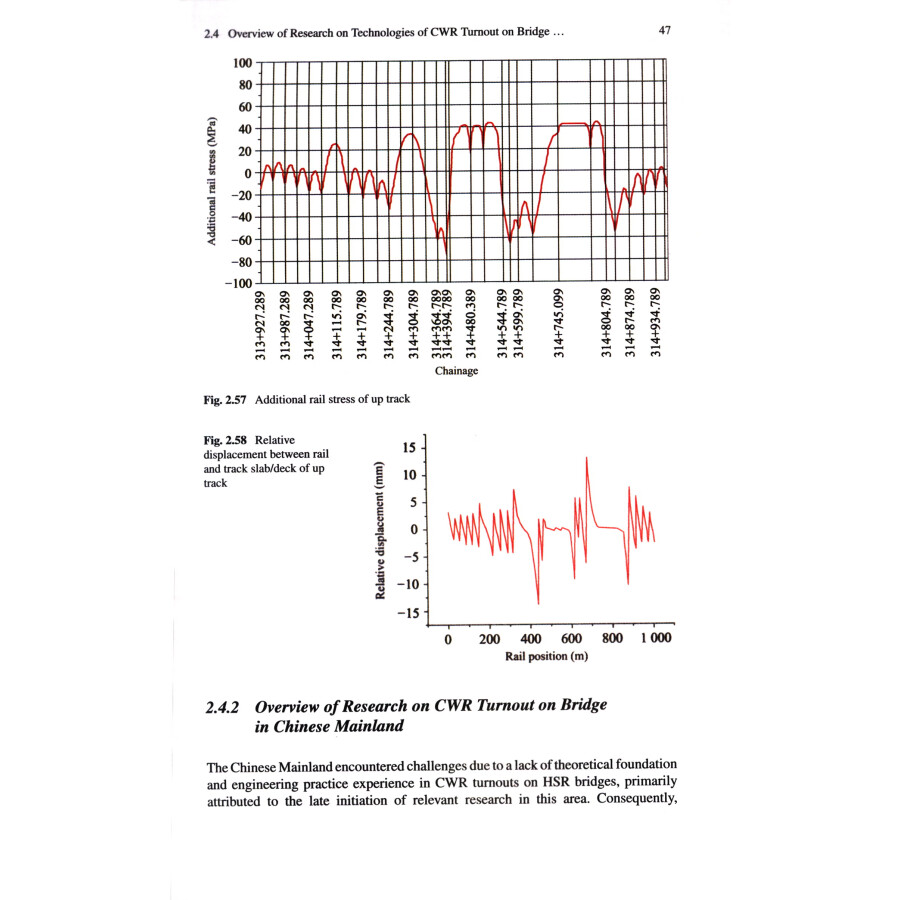Home ::
new ::
Continuously Welded Turnouts on High-Speed Railway Bridge
Details
This book systematically and comprehensively expounds the calculation theory,design method and engineering application of continuously welded turnouts on High-Speed railway bridge. This book applies the concept of systems engineering and considers the vehicle-turnout-bridge as a coupled system. It combines static analysis,dynamic simulation, laboratory tests, and field tests, integrating theoretical research with practical engineering applications. The book solves critical technical puzzles such as constitutive relationships in force transfer mechanisms and interactions between turnouts and bridges, optimal configurations of turnouts relative to bridges,and appropriate structural designs and parameters for turnout beams. It establishes the calculation theory and design method for welded turnouts on bridges, creating a complete technical framework that includes theoretical analysis, structural design,testing, monitoring, and technical standards, thereby ensuring the safe and stable operation of high-speed railway turnouts on bridges in China. Moreover, the book introduces innovative design concepts for controlling relative displacements between turnouts and bridges, proposes design methods for welded turnouts on high-speed railway bridges, conducts service status monitoring and dynamic performance testing,and validates a wealth of field data. It summarizes research findings and practical experiences in the field of welded turnout technology on high-speed railway bridges,serving as a valuable resource for industry professionals, college students, and postgraduates involved in high-speed railway track engineering.
Table of Contents
1 Introduction
1.1 Background
1.2 Complexity Analysis
1.2.1 Environmental Conditions
1.2.2 Turnout-Bridge Interaction Mechanisms
1.2.3 Turnout-Bridge Structures and Parameters
1.2.4 Wheel-Rail Interactions
1.2.5 Multi-Disciplinary Intersection
1.3 Key Technologies in CWR Tumout on Bridge
1.3.1 Constitutive Relation and Force Transmission Mechanisms in Turnout-Bridge Interactions
1.3.2 Rational Turnout-Bridge Arrangements
1.3.3 Rational Structural Forms and Design Parameters of Turnout Girder
1.3.4 Dynamic Performance Simulation and Evaluation of Train-Turnout-Bridge Coupling System
1.3.5 Design Criterion and Method of CWR Turnout on Bridge
1.4 Research Approach of Technologies in CWR Turnout on Bridge
1.4.1 Research Objectives
1.4.2 Technical Route and Research Approach
1.4.3 Research Methodology
2 Overview of Technological Development of CWR Turnouton Bridge in China and Abroad
2.1 Overview of Technological Development of CWR Turnout on Bridge in Germany
2.1.1 Structural Characteristics
2.1.2 Computational Theory
2.1.3 Design Approach
2.1.4 Design Requirements
2.2 Overview of Technological Development of CWR Turnout on Bridge in France
2.2.1 Computational Model
2.2.2 Arrangement Requirements
2.3 Overview of Technological Development of CWR Turnout on Bridge in the Republic of Korea
2.3.1 Overview of CWR Turnout on Bridges in the Republic of Korea
2.3.2 Computation of Girder-Rail Interactions for CWR Tumouts on Bridges in the Republic of Korea
2.3.3 Experience Summary of CWR Turnouts on Bridges in the Republic of Korea
2.4 Overview of Research on Technologies of CWR Turnout on Bridge in China
2.4.1 CWR Turnouts on HSR Bridges in Taiwan
2.4.2 Overview of Research on CWR Turnout on Bridge in Chinese Mainland
References
3 Computational Models and Methods for CWR Turnout on Bridge
3.1 Principle for Turnout-Bridge Longitudinal Interactions
3.1.1 Stress and Deformation Characteristics of CWR Turnouts
3.1.2 Stress and Deformation Characteristics of Bridge Structure
3.1.3 Turnout-Bridge Longitudinal Interactions
3.2 Turnout-Bridge-Pier Integration Computational Models
3.2.1 Model Assumptions
3.2.2 Computational Model for Ballasted Turnout
3.2.3 Computational Model for Ballastless Turnout
3.2.4 Computational Model for Ballastless Track with Longitudinally Coupled Base Slabs
3.2.5 Establishment of Firute Element Model and Application of Loads
3.3 Computation Method for CWR Turnouts on Bridges
3.4 Computational Analysis of Longitudinal Forces for CWR Single Turnouts on Bridges
3.4.1 Main Computation Parameters
3.4,2 Computation Results
3.5 Computational Analysis of Longitudinal Forces for CWR Tumout Groups on Bridges
3.5.1 CWR Turnout Groups on Bridges for Ballasted Track
3.5.2 CWR Turnout Groups on Bridges for Ballastless Track
……
4 Design Methodology of CWR Turnout on Bridge
5 Research on Structural Design of Girder Turnout
6 Dynamic Simulation Analysis of Turnout on Bridge
7 Status Monitoring of CWR Turnout on Bridge
8 Field Test for Mechanical Properties of CWR Turnout on Bridge
9 Design Cases of CWR Turnout on Bridge



